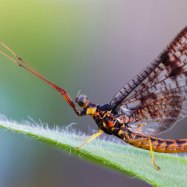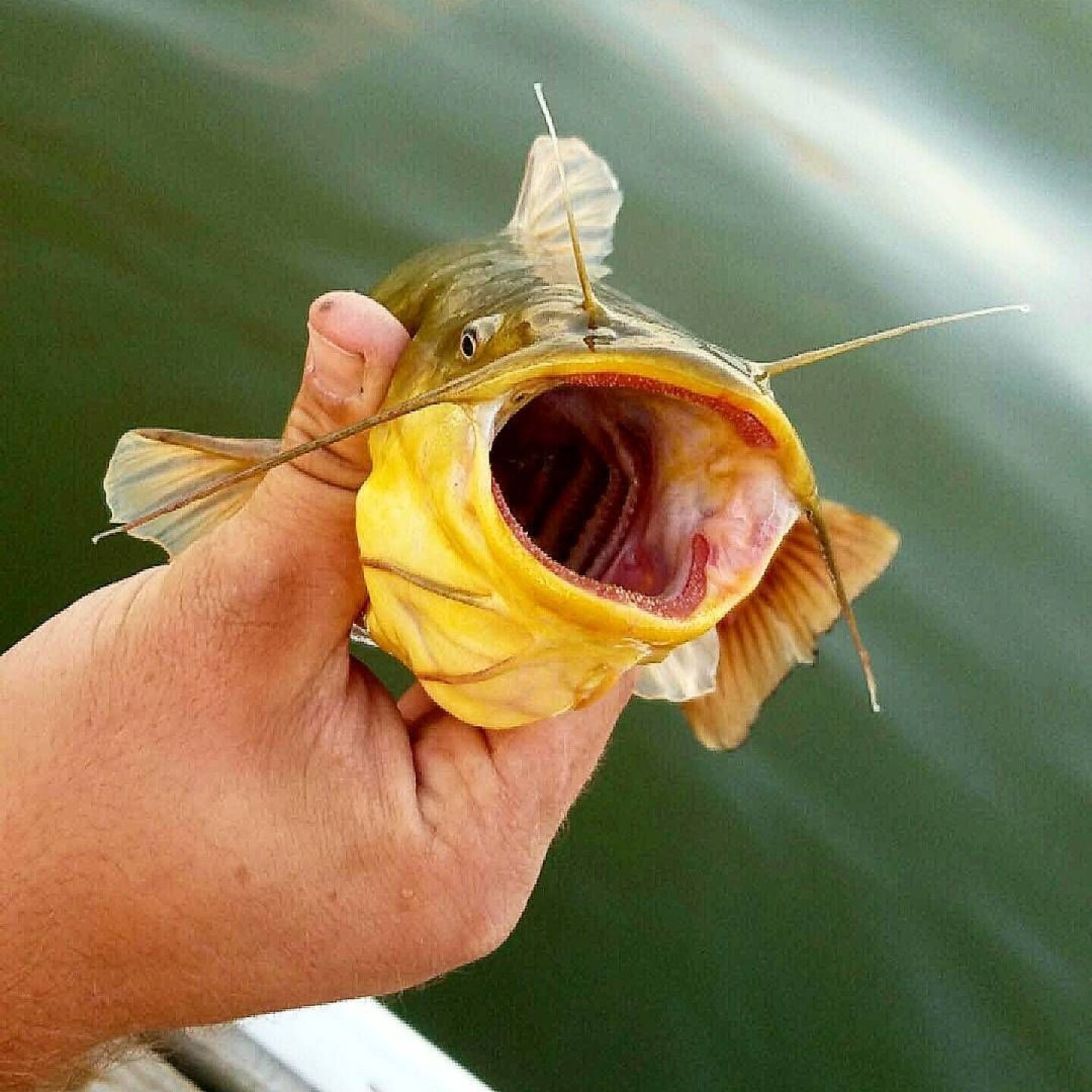
Catfish
2.5 cm (0.98 in) to 3 meters (9.8 ft)
Catfish are fascinating freshwater creatures found in ponds, rivers, streams, and lakes. Ranging from 2.5 cm (0.98 in) to an impressive 3 meters (9.8 ft) in length, they come in various species and body shapes. Despite their name, they are not actually related to cats but are named for their cat-like barbels. Keep an eye out for these slender and elongated fish on your next outdoor adventure! #catfish #freshwaterlife #naturelovers
Animal Details Summary:
Common Name: Catfish
Kingdom: Animalia
Habitat: Freshwater
The Mighty Catfish: A Unique and Formidable Freshwater Predator
When it comes to freshwater fish, there is one name that stands out amongst the rest – the catfish. Known for its unique appearance, diverse species, and impressive predatory skills, the catfish is a fascinating creature that has captured the attention of many.Catfish, a member of the Siluriformes order, can be found all over the world in various freshwater habitats such as ponds, rivers, streams, and lakes. They are omnivorous, meaning they will eat both plants and other animals, making them an important species in maintaining a balanced ecosystem Catfish. From their appearance to their behavior, let us take a closer look at these remarkable creatures.
Classification and Habitat
Catfish belong to the Animalia kingdom, the Chordata phylum, and the Actinopterygii class – a group of fish with ray-finned or bony fins. Within the Siluriformes order, there are over 3,000 known species, making it the largest order of freshwater fish in the world. These fish are diverse in their habitats, with some species living in fast-flowing rivers, while others prefer stagnant ponds.We can find catfish all over the world, with varying species originating from different countries. Some notable locations include the Amazon River in Brazil, the Mississippi River in the United States, and the Mekong River in Asia. This shows just how widespread and adaptable these creatures are.
An Omnivorous Appetite
One of the most striking features of the catfish is its ability to eat almost anything. Being omnivorous, they have a diverse diet, making them important components of their ecosystems Collared Peccary. They mainly feed on small fish, insects, crustaceans, and plants found in their habitat. Some species, such as the African catfish, are also known to prey on other fish species, making them formidable predators.Interestingly, catfish also have a unique feeding method – suction feeding. They use a combination of their powerful jaws and the muscles in their mouth to create a vacuum, sucking in their prey. This method allows them to catch fast-moving prey and is an impressive adaptation that sets them apart from other fish species.
Varied Coloration and Body Shape
One of the most fascinating aspects of catfish is their diverse appearances. They come in various shades, from mottled brown to vibrant red and even albino. This coloration often serves as camouflage, helping them blend in with their surroundings and hide from predators.Their body shape can also vary greatly depending on the species. Some have a flattened head and body, while others have a more rounded shape. Most catfish have a slender and elongated body, perfect for maneuvering through the water and catching prey. This variation in coloration and body shape only adds to the uniqueness of these creatures.
A Wide Range of Sizes
When it comes to size, the catfish once again does not disappoint. The smallest catfish species, the banjo catfish, can measure as little as 2.5 cm (0.98 in), while the largest, the Mekong giant catfish, can reach up to 3 meters (9.8 ft) in length. This range of sizes is impressive, with some species being small enough to fit in the palm of your hand and others being as long as a car.Their size also plays a significant role in their behavior, with the larger species usually being more solitary and territorial, while the smaller ones form large schools. This shows the adaptability and complexity of these creatures, making them an interesting subject for further scientific research.
The Importance of Catfish in the Ecosystem
Apart from their unique appearance, another reason why catfish is a popular fish is their crucial role in maintaining a balanced ecosystem. As they are omnivorous, they not only consume plants and insects but also other smaller fish. This helps prevent overpopulation of certain species and keeps the ecosystem in check.Catfish also serve as an important food source for larger predatory fish and other animals, such as birds and mammals. In some cultures, catfish is also a staple in their diet, providing a valuable source of protein and nutrients.
Moreover, catfish has been a popular choice for aquaculture, providing a sustainable source of income and food for many communities. With their adaptable nature and ability to thrive in different environments, catfish farming has become a viable option for many regions worldwide.
Conservation Efforts and Challenges Faced by Catfish
Despite their crucial role in the ecosystem and their popularity among fishermen and aquaculture enthusiasts, catfish species are facing numerous challenges that threaten their existence. One of the main threats is overfishing, which has led to a decline in certain catfish populations.Deforestation and pollution are also major concerns as they affect the water quality and habitats of catfish, making it difficult for them to survive. Additionally, the introduction of invasive species, such as the Asian carp in North America, has caused competition for resources and even predation of catfish species, further putting them at risk.
To combat these threats, several conservation efforts have been put in place worldwide. These include implementing fishing quotas, creating protected areas for catfish, and monitoring water pollution levels. There is also ongoing research to better understand these fish and their habitats, with the hope of finding more effective ways to protect them.
Final Thoughts
From their unique appearance to their diverse species and impressive predatory skills, catfish are undoubtedly fascinating creatures. Their crucial role in the ecosystem and their adaptability to different environments make them important and valuable fish worldwide.However, as with many other species, catfish face numerous challenges that threaten their survival. It is important for us to be aware of these threats and take action to protect and conserve these remarkable creatures.
With ongoing conservation efforts and a better understanding of catfish and their habitats, we can ensure their survival for generations to come. So next time you see a catfish in a pond or on your plate, take a moment to appreciate the complexity and importance of this mighty freshwater predator.

Catfish
Animal Details Catfish - Scientific Name: Siluriformes
- Category: Animals C
- Scientific Name: Siluriformes
- Common Name: Catfish
- Kingdom: Animalia
- Phylum: Chordata
- Class: Actinopterygii
- Order: Siluriformes
- Family: Various
- Habitat: Freshwater
- Feeding Method: Omnivorous
- Geographical Distribution: Worldwide
- Country of Origin: Varies depending on species
- Location: Ponds, rivers, streams, and lakes
- Animal Coloration: Varies depending on species
- Body Shape: Slender and elongated
- Length: 2.5 cm (0.98 in) to 3 meters (9.8 ft)
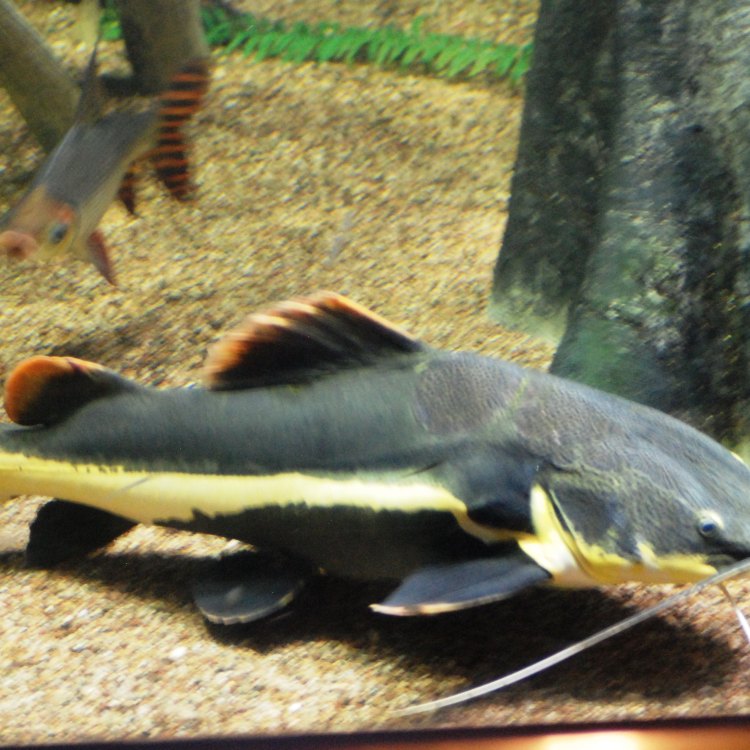
Catfish
- Adult Size: Varies depending on species
- Average Lifespan: Varies depending on species
- Reproduction: Egg laying
- Reproductive Behavior: Varies depending on species
- Sound or Call: Most catfish do not produce sounds
- Migration Pattern: Varies depending on species
- Social Groups: Varies depending on species
- Behavior: Varies depending on species
- Threats: Habitat loss, pollution, overfishing
- Conservation Status: Varies depending on species
- Impact on Ecosystem: Important role as bottom feeders and scavengers
- Human Use: Commercial fishing, aquaculture, aquarium trade
- Distinctive Features: Whisker-like barbels, scaleless skin
- Interesting Facts: Some catfish can produce electric shocks
- Predator: Varies depending on species
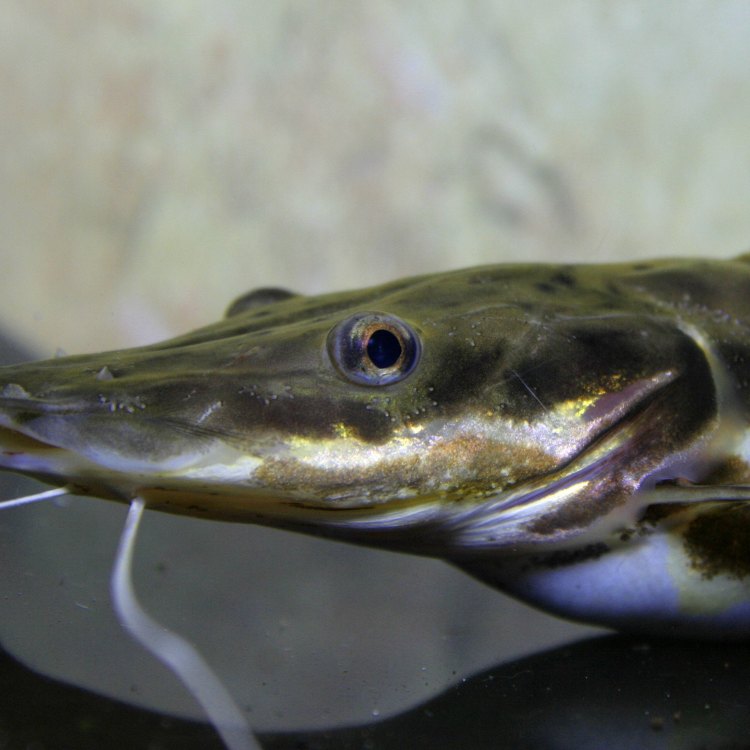
Siluriformes
The Deceptive Beauty of Catfish: Unique Traits and Impact on Ecosystem
When we think of fish, our minds often conjure up images of brightly colored tropical species swimming gracefully in coral reefs. But there is a fascinating group of fish that often gets overlooked - catfish. These bottom-dwelling creatures may not have the visual appeal of their marine counterparts, but they have a host of unique features and play a crucial role in the ecosystem. In this article, we will delve into the world of catfish and explore their distinctive traits and impact on the environment PeaceOfAnimals.Com.Adult Size: Varies depending on species
One of the most remarkable things about catfish is their incredible diversity. With over 3,000 known species, catfish can be found in a range of sizes and shapes. The smallest species, the banjo catfish, only grows up to 1 inch in length, while the largest, the Mekong giant catfish, can reach a whopping length of 10 feet and weigh up to 660 pounds. Most catfish, however, fall somewhere in between these extremes, with an average size ranging from 2-3 feet.
Average Lifespan: Varies depending on species
Just as their size varies, so does the lifespan of catfish. On average, they can live anywhere from 5-20 years, depending on the species. The oldest recorded catfish was a European wels that lived for over 80 years. Interestingly, catfish that are kept in aquariums tend to live longer than their wild counterparts due to better living conditions and lack of predators.
Reproduction: Egg laying
Catfish reproduce through egg-laying, with females often laying hundreds of eggs at a time Cross Fox. The eggs are usually deposited in a nest built by the male, who then guards the eggs until they hatch. Once the young catfish hatch, they are fully independent and must fend for themselves.
Reproductive Behavior: Varies depending on species
The reproductive behavior of catfish can differ greatly depending on the species. Some species engage in elaborate courtship rituals, while others simply deposit their eggs and move on. Many species also exhibit parental care, with the male guarding the eggs until they hatch. Some species have even been observed engaging in cooperative parental care, with both the male and female taking turns in guarding the eggs and caring for the young.
Sound or Call: Most catfish do not produce sounds
Unlike many other fish species, most catfish do not produce sounds. However, some species, such as the electric catfish, have specialized organs that allow them to produce electric shocks as a form of communication.
Migration Pattern: Varies depending on species
The migration patterns of catfish also vary greatly depending on the species. Some species, like the channel catfish, are known to migrate long distances in search of food or breeding grounds. Others, such as the flathead catfish, prefer to stay in one area for their entire lives.
Social Groups: Varies depending on species
Catfish are primarily solitary creatures, with most species living and foraging alone. However, some species, like the European catfish, have been observed forming small groups for hunting and protection.
Behavior: Varies depending on species
Catfish behavior also varies greatly depending on the species. Some species, such as the electric catfish, are nocturnal, while others, like the channel catfish, are more active during the day. Many species are bottom feeders, using their barbels to locate food (more on this unique feature later). Others, such as the flathead catfish, are opportunistic predators and will even feed on other fish.
Threats: Habitat loss, pollution, overfishing
Like many other species, catfish face a range of threats from human activities. Habitat loss, due to factors such as dam construction and water pollution, is a major threat to catfish populations. Pollution can also directly harm catfish, especially those with sensitive barbels. Overfishing, both for commercial and recreational purposes, has led to a decline in catfish populations in many areas.
Conservation Status: Varies depending on species
Due to their vast number of species, the conservation status of catfish varies depending on the specific species. Some species, like the Piraiba catfish, are classified as endangered, while others, like the channel catfish, are considered of least concern. However, due to the increasing environmental threats, many catfish species are facing declining populations.
Impact on Ecosystem: Important role as bottom feeders and scavengers
Catfish may not have the flashy appearance of other fish, but their contribution to the ecosystem is essential. As bottom feeders and scavengers, catfish play a crucial role in maintaining the balance of their habitats. They help keep the water clean by feeding on decaying matter, and their presence can also indicate the overall health of an aquatic environment.
Human Use: Commercial fishing, aquaculture, aquarium trade
Catfish have been an important source of food for humans for centuries, with many cultures having traditional dishes made with catfish. In modern times, catfish are often commercially fished and sold in markets worldwide. They are also popular in the aquaculture industry, with farms raising them for food and stocking in recreational fishing ponds. Moreover, catfish are a common sight in aquariums due to their unique appearance and ability to adapt to various water conditions.
Distinctive Features: Whisker-like barbels, scaleless skin
Perhaps the most distinctive feature of catfish is their whisker-like barbels, which are located around their mouths. These barbels are not only used for finding food, but they also contain taste buds, allowing catfish to taste food before they eat it. Catfish also have a unique scaleless skin, which feels smooth and slippery to the touch.
Interesting Facts: Some catfish can produce electric shocks
While most catfish do not produce sounds, some species have a much more remarkable ability - they can produce electric shocks. These shocks are used both for communication and defense, and they can vary in voltage depending on the species. The electric catfish, for example, can produce a shock of up to 350 volts, enough to stun a potential predator or prey.
Predator: Varies depending on species
As with other animals, catfish also have predators in the wild. Small catfish may fall prey to larger fish, birds, or reptiles, while larger catfish may be hunted by predators such as alligators or crocodiles.
In the world of fish, catfish may not get the recognition they deserve, but their unique traits and important role in the ecosystem make them a fascinating subject to explore. From their diverse sizes and behaviors to their distinctive features and ability to produce electric shocks, catfish truly are a one-of-a-kind species. Let's work towards protecting their habitats and ensuring their survival, so we can continue to appreciate and learn from these intriguing creatures.
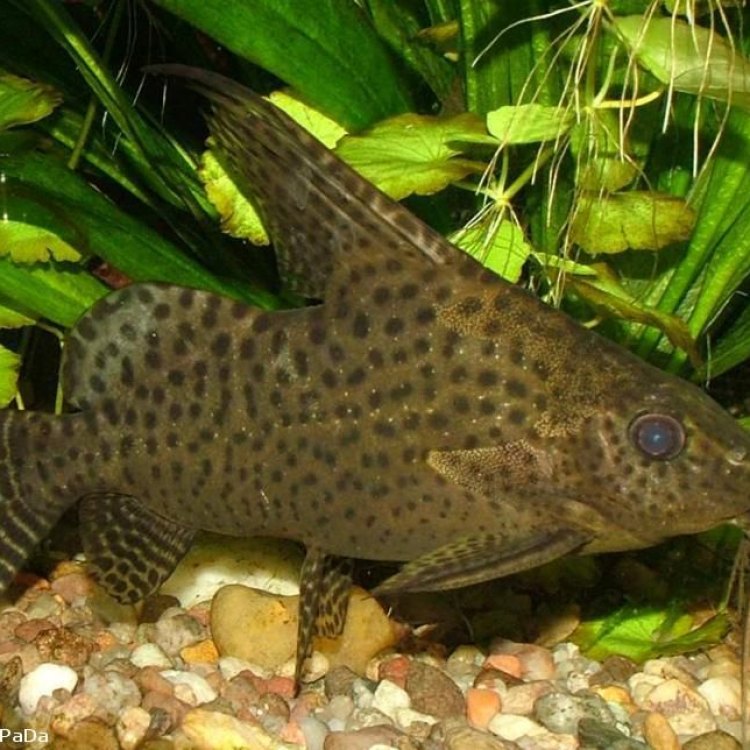
The Mighty Catfish: A Unique and Formidable Freshwater Predator
Disclaimer: The content provided is for informational purposes only. We cannot guarantee the accuracy of the information on this page 100%. All information provided here may change without prior notice.



